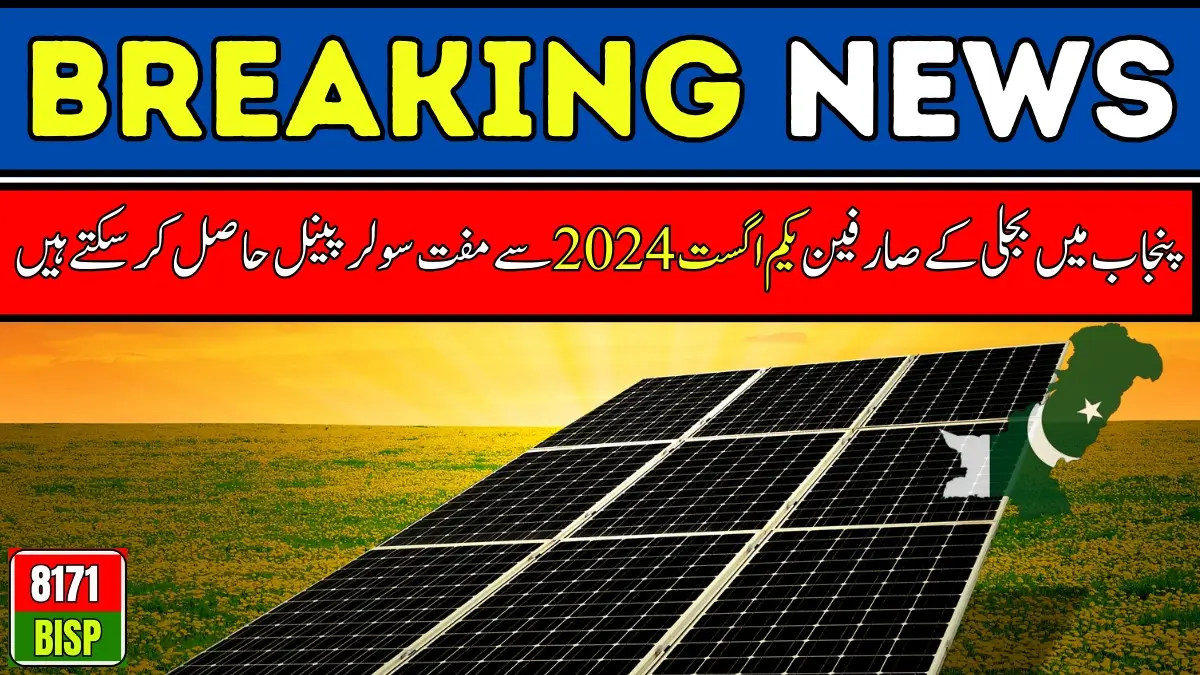Punjab Solar Scheme 2024
Finally, the waiting is over. The Punjab government has announced the final date for the supply of solar panels under the Punjab Solar Scheme. This scheme is a significant initiative by the Punjab government to alleviate the burden of heavy electricity bills for the poor and deserving community. This article provides all the essential details, including the start date of the solar panel distribution, registration process, and eligibility criteria. If you want to benefit from this scheme, this article is for you.
Punjab Solar Panel Scheme Distribution Date
During a recent press conference, Chief Minister of Punjab, Maryam Nawaz Sharif, announced that the Punjab government will start distributing free solar panels across Punjab on Independence Day, August 14. The scheme aims to provide free solar systems to families using 50 to 500 units of electricity. The registration process for the scheme has already started, and detailed instructions are provided below.
Registration Process for Punjab Solar Scheme 2024
Families interested in receiving solar panels need to undergo a cross-verification process. To apply, visit the nearest Bank of Punjab branch to get the registration form from the representative, fill it out, and submit it back. This is the only official registration process. Alternatively, you can download the application form from the Bank of Punjab’s official website, fill it out at home, and submit it to the bank.

Quick Details
| Criteria | Details |
| Program Name | Punjab Solar Scheme 2024 |
| Distribution Start Date | August 14, 2024 |
| Eligibility | Filers only, not part of other government programs |
| Monthly Income Limit | Less than 50,000 PKR |
| Permanent Residency | Punjab |
| Employment Status | No government employees in family |
| Utility Meter Registration | Single meter for utility bills |
| Phases of Distribution | Two phases: 50-200 units, 200-500 units |
| Initial Payment for 200-500 Units | 10% by household, 90% by government |
| Environmental Benefits | Reduced electricity bills, eco-friendly |
Distribution Details
If we talk about the distribution of solar panels, it is divided into two phases. In the first phase, the Punjab government will provide free solar systems to consumers using 50 to 200 units. While in the second phase, the process of providing solar systems will start for customers who use electricity from 200 to 500 units. And if you talk about when the distribution process will start, then I have already told you in the beginning of the article that the process of solar panel distribution should be started by the Punjab government on August 14th, Independence Day.
Payment Details
- Households using 50 to 200 units of electricity per month will be provided with different systems.
- The payments for the solar panels will be interest-free.
- Households that consume 200 to 500 units of electricity will have to pay 10 percent initially to get a solar system. While the remaining 90 percent will be paid by the Punjab government.
Benefits of the Solar Scheme
- Lower Electricity Costs: The program aims to reduce electricity bills by 40%.
- Environmental Benefits: It will contribute to repairing past environmental damage and preventing future issues.
Conclusion
The Punjab Solar Scheme is an essential initiative by the Government of Punjab to promote renewable energy and assist poor and deserving families in reducing their electricity bills. According to Chief Minister Punjab, Maryam Nawaz Sharif, the distribution of solar panels will begin on August 14, Independence Day. Families are encouraged to complete their registration as soon as possible by following the procedures outlined in this article. For further information, feel free to comment in the comment section below.
Aspirant families are requested to ensure their registration process as soon as possible by following the procedure mentioned in this article so that they too can get a solar system. Further, if anyone wants to get any kind of information regarding this, they can get complete information by commenting in the comment section below.
